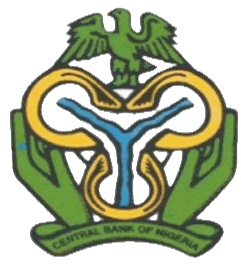Please use this identifier to cite or link to this item:
https://library.cbn.gov.ng:8443/jspui/handle/123456789/473| Title: | An examination of the structural inflation dynamics in Nigeria |
| Authors: | Odonye, O. J. Odeniran, S. O. Oduyemi, A. O. Olaoye, O. J. Ajayi, K.J. |
| Keywords: | Price stability Monetary policy |
| Issue Date: | Mar-2014 |
| Publisher: | Central Bank of Nigeria, Research Department. |
| Citation: | Odonye, O. J., Odeniran, S. O., Oduyemi, A. O., Olaoye, O. J. & Ajayi, K.J (2014). An examination of the structural inflation dynamics in Nigeria, Economic and Financial Review (EFR), 52(1), 65-86. |
| Series/Report no.: | Vol. 52;No. 1 |
| Abstract: | The attainment and sustenance of price stability defined as single digit inflation is expected to create an enabling environment for the growth of the real sector. This has been one of the cardinal goals of the Central Bank of Nigeria’s monetary policy, since its establishment in 1958. However, in most of the years the attainment of this objective had been elusive as episodes of very high inflation roles were prevalent, especially in the 1980s and I990s in Nigeria. Among other issues, the Central Bank of Nigeria has regarded inflation as monetary phenomenon, requiring management of monetary aggregates as a means of price stability. Persistent high rates of inflation despite sluggish growth in monetary aggregates suggest that there could be other drivers of inflation outside of monetary factors. Against this backdrop, this study examines the dynamics of inflation in Nigeria, including the structural evolution as well as the direction of its movement with a view to designing appropriate policy measures to rein in the inflationary pressures. Following Argy (1970) and Mosho (1996), four (4) hypotheses of structural variables namely: agricultural bottleneck, demand shift, export variability, and foreign exchange scarcity were tested. The study utilised quarterly data from 1970(1) to 2013 (4) except for Bureau de Change (BDC) premium where the duration was 1991(1) to 2013 (4) based on Auto Regressive Distributed Lag (ARDL) model. The results show that structural factors like budget deficit, rainfall, variation in export, exchange rate premium hove profound influence on movement in CPI in Nigeria during the period. Exchange rate premium appears to significantly influence inflation in both the short- and long run equations while most of the other structural variables ore significant only in the long-run. The study therefore concludes that the monetary authority should incorporate structural variables in its inflation modes in order to holistically rein in inflationary pressures in Nigeria. |
| URI: | http://library.cbn.gov.ng:8092/jspui/handle/123456789/473 |
| ISSN: | 1957-2968 |
| Appears in Collections: | Economic and Financial Review |
Files in This Item:
| File | Description | Size | Format | |
|---|---|---|---|---|
| An examinatiopn of the structural inflation dynamics in nigeria.pdf | 6.42 MB | Adobe PDF |  View/Open |
Items in DSpace are protected by copyright, with all rights reserved, unless otherwise indicated.
Admin Tools
